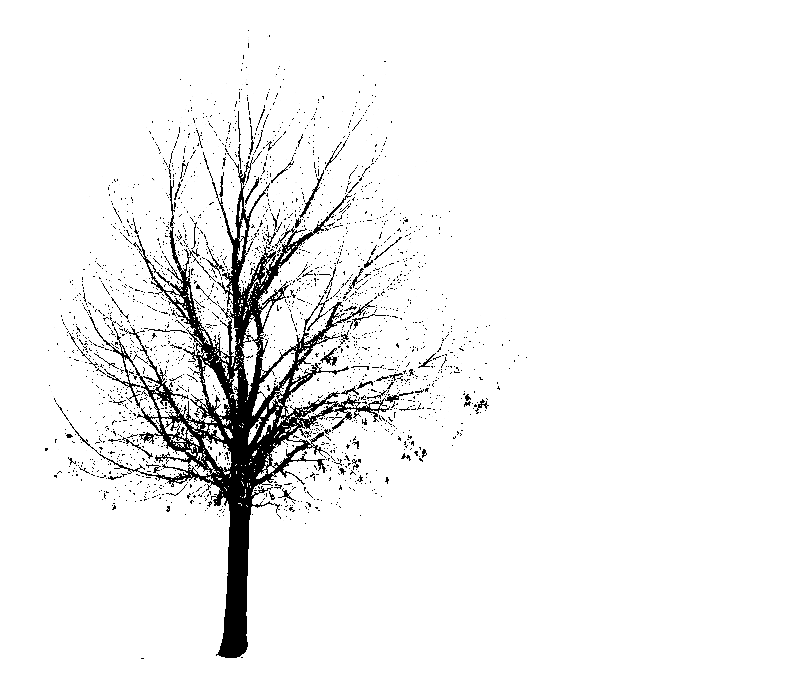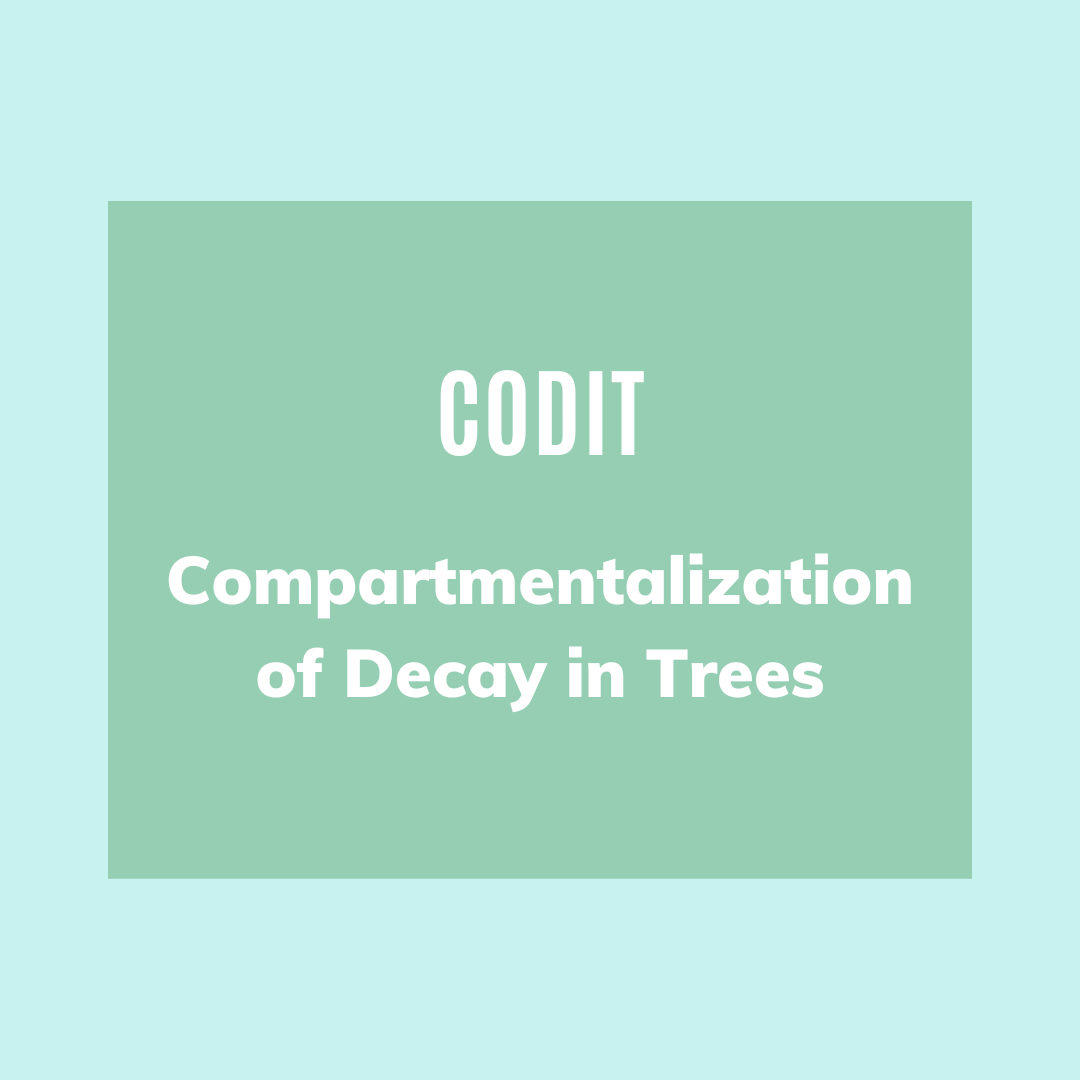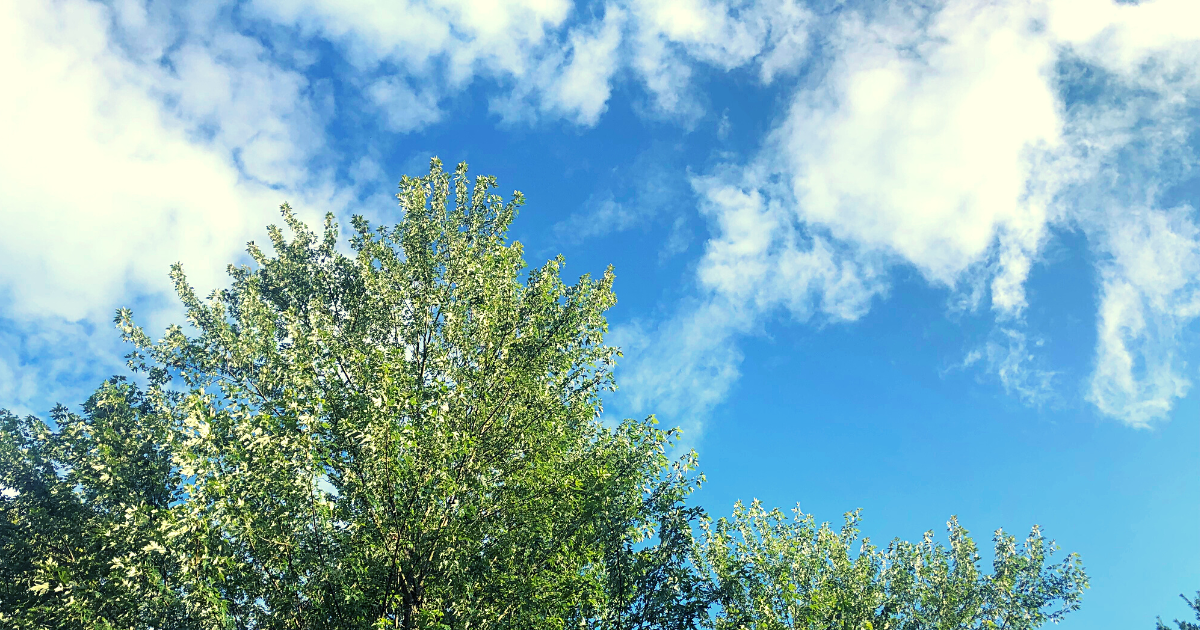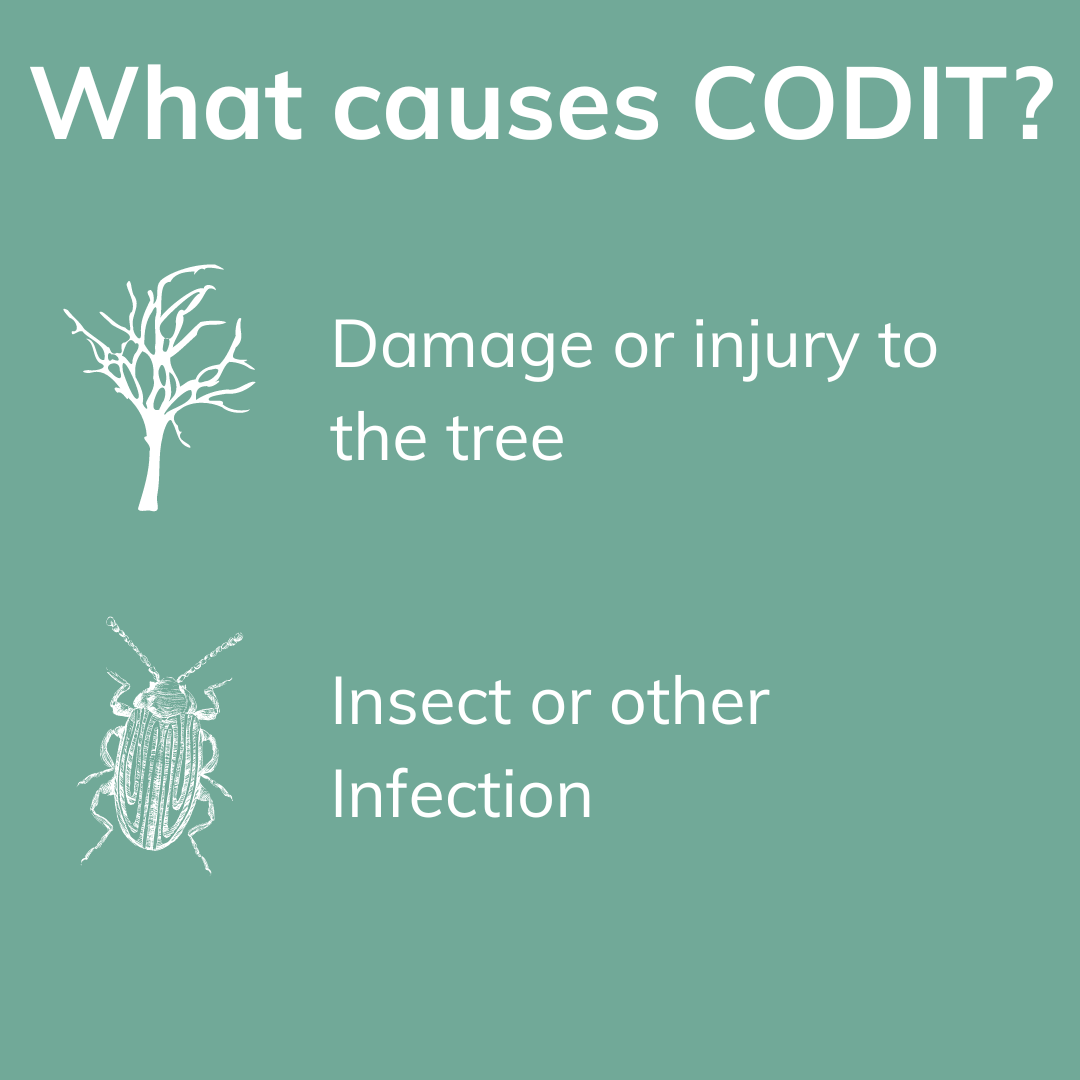CODIT: How A Tree Saves Itself From Injury or Disease

You ever wonder how a tree saves itself from injury or disease?
It's called CODIT.
Compartmentalization of decay in trees.
In short, instead of healing a wound, a tree will block it off, or compartmentalize the wound, to save the rest of the tree.
More on that below.
CODIT: Compartmentalization of Decay In Trees

The acronym CODIT actually stands for compartmentalization of decay (or damage) in trees. Every living tree has this defense mechanism to prevent itself from death in the event of an injury or an infection.
...what is compartmentalization in a damaged or decaying tree?
Okay, okay. In short, it is the process a tree uses to 'heal itself' through compartmentalization of the injury or disease it has sustained. Say there's an infection in one of the tree branches and it begins to die.
You remember Titanic, don't you?
The ship hit an iceberg and water started flooding the lower portion of the boat. To prevent the water from spreading, they walled off the water with those fancy doors.
Of course, this didn't save the boat but the analogy is useful for understanding (and as you'll soon find out, CODIT itself isn't perfect and might not save the tree).
With an injured or tree it's very similar.
- The tree sustains the damage or infection.
- The tree then walls off the damaged area to prevent it from spreading to other parts of the tree.
You'll notice, we wrote 'heal itself' above in quotations. That's because unlike a human or an animal (which heals an injury or infection like Wolverine), a tree will just block off the injury or disease to stop it from spreading to the rest of the tree. Before you start to cut your tree branches, make sure you use a sterilized pair of tools.
Okay, that was the overly simplified explanation of CODIT so if you are looking for something more in depth, keep reading.

The Four Walls of CODIT
The CODIT system is actually a model by which a tree develops/uses four walls of defense to create wound closure against damage or decay in the tree. The first three walls are present in a healthy tree or they form when the tree sustains an injury to its trunk or to a branch. The fourth wall is new healthy tissue that develops in the cambium when new growth is initiated from the injury.
Wall 1 - The Vertical Wall
The first wall, frequently called the vertical wall, stops the infection from spreading up or down in the vertical direction (or vertical spread). This wall is the weakest wall so it allows the decayed organisms to spread furthest in the vertical direction.
The second wall is also the second weakest wall compared to the first wall.
Wall 2 - The Tangential Wall
The second wall is the tangential wall. It prevents the spread of disease or injury from spreading inwards toward the pith (the very center of the tree and is the oldest part of the tree).
Wall 3 - The Radial Wall
The third wall is the radial wall. The radial wall prevents injury from spreading in the radial direction. The radial direction basically just means around the stem.
The third wall is the strongest wall present at the time of wounding.
Wall 4 - The Protective Wall
The fourth wall is the new wall formed by the cambium following a tree's injury. If you don't know what the cambium is, it is the growth layer of the tree. It makes new cells during the growing season and is the reason your tree's trunk and branches are thick and getting thicker.
If you suspect your tree is damage beyond repair, and is in danger of toppling over - call a professional arborist in your area today. You don't want to take the chance of the tree falling over and causing damage to anything or anyone.
The First Three Stop The Spread But Only The Fourth Wall Seals The Wound
Once created, the fourth wall remains intact and becomes the strongest wall. It will confine injury or disease from healthy tissue made prior to the injury and will stay that way so long as the tree isn't hurt again.

Drawbacks of CODIT In Trees
The biggest benefit of CODIT is that it stops decay from spreading throughout a tree. This saves the trees life and allows it to mature into older age but there are some drawbacks.
- Sugars Created By The Tree Cannot Move Across Wall 4
- Cracks Can Form Along Wall 4
Sugars Created By The Tree Cannot Move Across Wall 4
Unfortunately when the fourth wall forms, sugars can not or have a difficult time passing this tough barrier. Sugar can get trapped inside the walled-off portion and therefore becomes available to decaying tissue.
You can imagine how much stress the tree incurs creating new sugars but not having access to them. It could even prematurely begin to drop its leaves.
Cracks Form Along Wall 4
Cracks can form along the newly created Wall 4. This crack can follow Wall 4 all the way around its radial access, or along the trunk. Other cracks can form called closure cracks which is along the spot where Wall 4 seals the wound.
The biggest issues with these cracks is that sometimes they never close. If the cracks never close, the tree becomes susceptible to breaking later on which might be a worse fate than the initial injury itself.
That's about it!
This was a relatively short guide on CODIT. Just another reason why trees and Mother Nature are awesome.
Need to plant a tree? Be sure to check out some of our other guides on Sweet New Earth.
Join our community!
Join to receive guides, insights, and the latest gardening deals!
